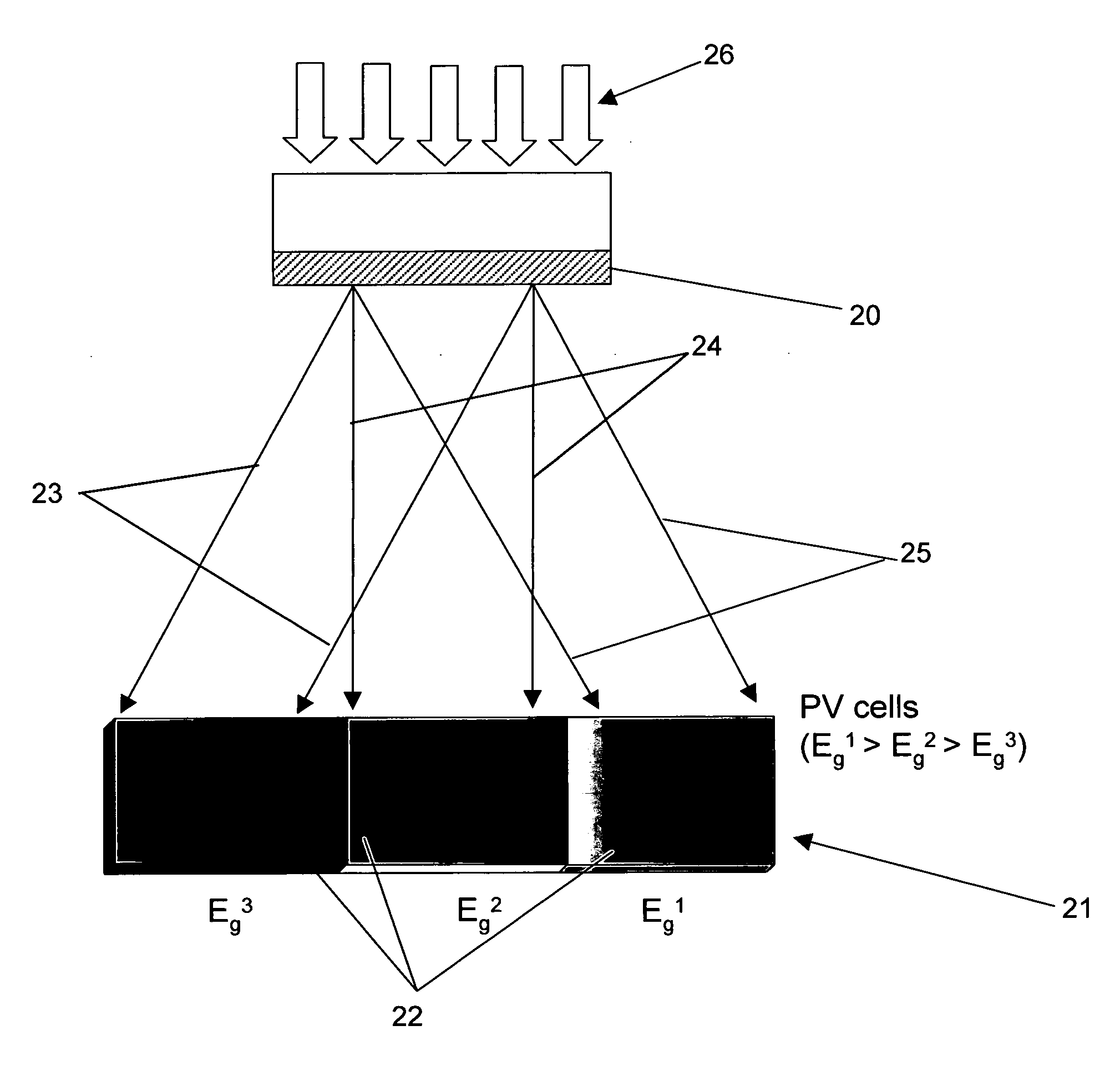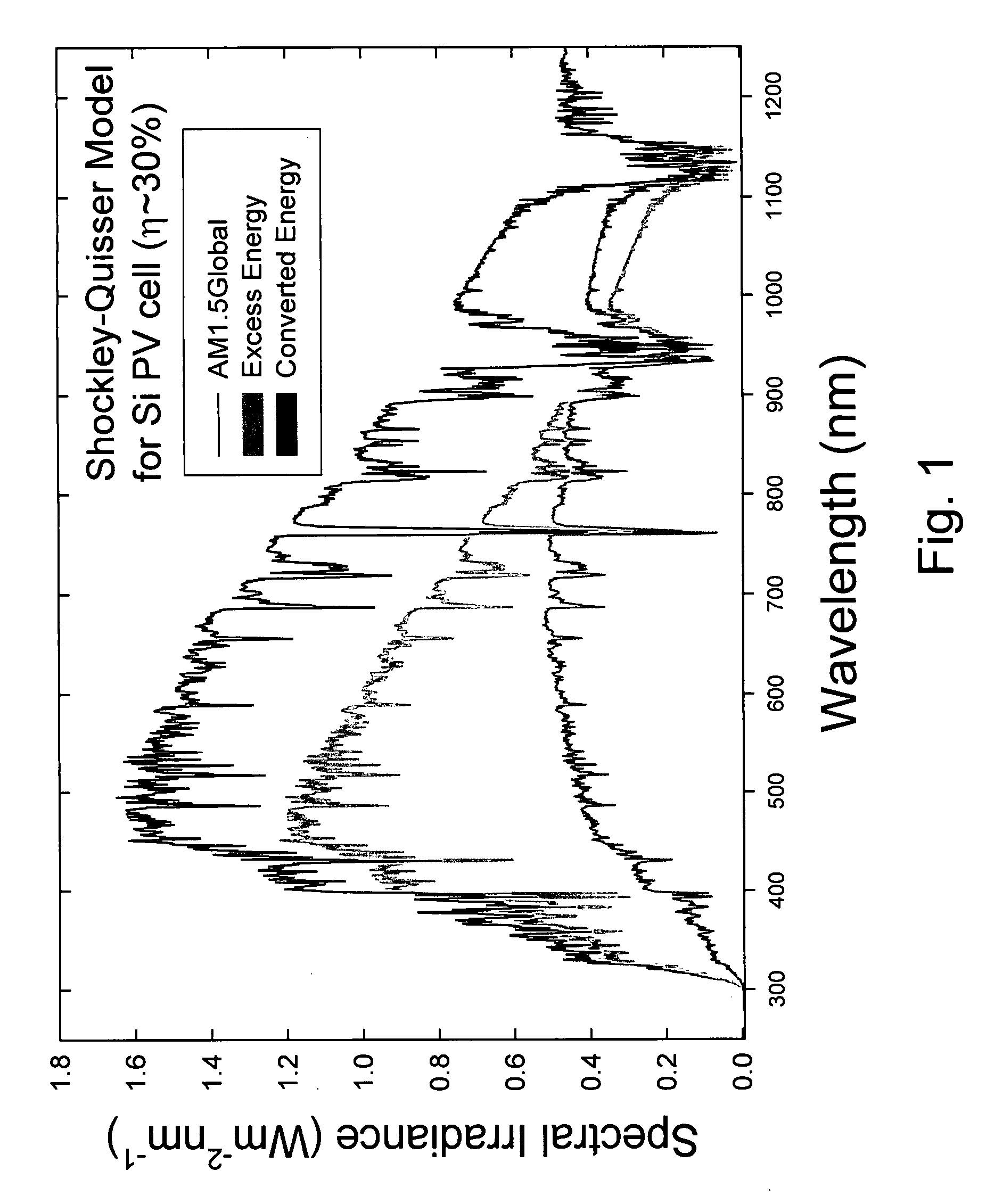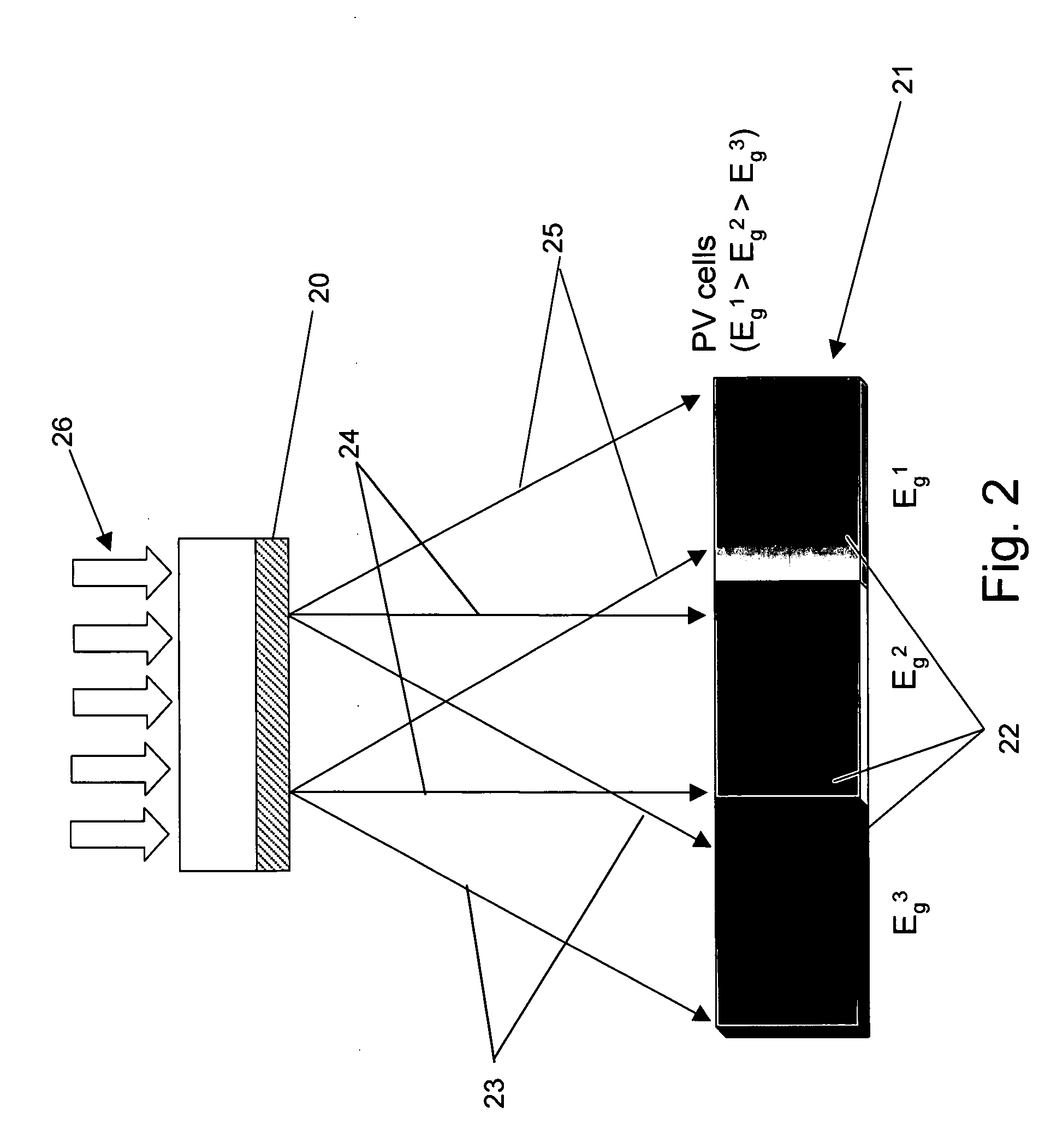Systems and methods for enhanced solar module conversion efficiency
a solar module and conversion efficiency technology, applied in the field of photovoltaics (pv) technology, can solve the problems of low conversion efficiency of solar cells with single-junction conversion, and loss mechanisms limiting the efficiency of conventional single-junction solar cells, so as to reduce the required pv cell area, improve solar energy conversion efficiency of solar cells, and improve the effect of solar receiver conversion efficiency
- Summary
- Abstract
- Description
- Claims
- Application Information
AI Technical Summary
Benefits of technology
Problems solved by technology
Method used
Image
Examples
Embodiment Construction
[0070] The present inventions provide combinations of features useful in increasing the efficiency and lowering the cost of power production from sunlight.
[0071] Disclosed herein is a solar energy receiving system designed to employ the principle of matching the band-gap energies of PV cells with the solar spectral distribution for increasing the efficiency of converting solar energy into electricity. The overall efficiency of solar conversion assemblies can be enhanced, e.g., using lateral arrays of PV cells having various band gap energies, in combination with improved dispersive optics, improved current conductors and contacts, and light concentrators.
[0072] A simple and relatively straightforward way to match the band-gap energies of solar cells with the spectral distribution of solar irradiance is to utilize the dispersive optics 20 of a prism and / or a diffraction grating to spatially distribute photons of sunlight with different energies to the most compatible (appropriate) ...
PUM
 Login to View More
Login to View More Abstract
Description
Claims
Application Information
 Login to View More
Login to View More - R&D
- Intellectual Property
- Life Sciences
- Materials
- Tech Scout
- Unparalleled Data Quality
- Higher Quality Content
- 60% Fewer Hallucinations
Browse by: Latest US Patents, China's latest patents, Technical Efficacy Thesaurus, Application Domain, Technology Topic, Popular Technical Reports.
© 2025 PatSnap. All rights reserved.Legal|Privacy policy|Modern Slavery Act Transparency Statement|Sitemap|About US| Contact US: help@patsnap.com



